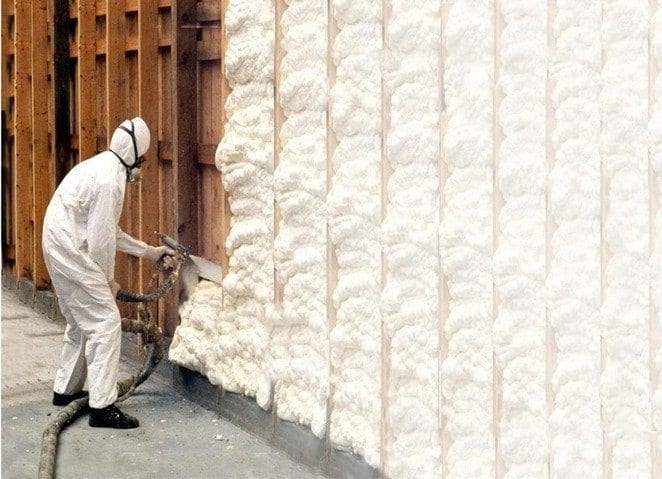
How Much Does Insulation Save on Energy Bills
With rising energy costs and increasing environmental concerns, many homeowners are seeking effective ways to reduce their energy consumption and save on utility bills. One of the most efficient methods to achieve this is by improving the insulation of your home. Insulation not only enhances comfort but also plays a crucial role in energy conservation. This article explores the benefits of insulation, how it works, and answers the pressing question: how much does insulation save on energy bills?
Understanding the Role of Insulation in Energy Efficiency
Insulation acts as a barrier to heat flow, helping to keep your home warm during the winter and cool in the summer. The effectiveness of insulation is measured by its R-value, which indicates its resistance to heat transfer. The higher the R-value, the better the insulation will perform in maintaining the desired indoor temperature.
When properly installed, insulation reduces the need for heating and cooling by slowing down the rate at which heat enters or leaves your home. This leads to a significant reduction in energy consumption, thereby lowering your energy bills. But how much can you actually save by insulating your home?
How Much Can Insulation Save on Energy Bills?
The savings on energy bills from insulation can vary depending on several factors, including the type of insulation used, the areas of your home that are insulated, and the climate in which you live. On average, insulation can save homeowners up to 15-20% on their heating and cooling costs. In some cases, especially in homes with older or inadequate insulation, the savings can be as high as 45%.
For instance, if your annual energy bill amounts to £1,200, a 20% reduction through improved insulation could save you around £240 per year. Over time, these savings can easily offset the initial cost of insulation, making it a wise investment for any homeowner.
Factors That Influence Energy Savings from Insulation
- Type of Insulation: Different insulation materials offer varying levels of thermal resistance. Fibreglass, cellulose, and spray foam are among the most common types of insulation, each with its own advantages and R-value.
- Area of Application: The areas of your home that are insulated will greatly impact the overall energy savings. Attics, walls, floors, and basements are key areas where insulation can make a substantial difference.
- Climate: The climate in your region also plays a role in determining how much you can save. Homes in colder climates benefit more from insulation during the winter, while those in warmer regions save on cooling costs in the summer.
- Existing Insulation: If your home already has some insulation, the additional savings from new insulation may be less dramatic. However, upgrading old or inadequate insulation can still yield significant benefits.
Where to Insulate for Maximum Savings
To maximise energy savings, it is crucial to prioritise the areas of your home that are most susceptible to heat loss or gain. Here are the key areas to focus on:
Attic Insulation
The attic insulation is one of the most important areas to insulate, as it is where most heat loss occurs in the winter and where heat enters during the summer. Proper attic insulation can reduce your energy bills by up to 25%, making it one of the most cost-effective improvements you can make.
Wall Insulation
Exterior walls are another critical area for insulation. By insulating your walls, you can reduce heat transfer between the inside and outside of your home, leading to more consistent indoor temperatures and lower energy consumption.
Floor Insulation
Insulating the floors above unconditioned spaces, such as basements or crawl spaces, can also contribute to energy savings. This is particularly important in older homes where floors may be poorly insulated or not insulated at all.
Basement and Crawl Space Insulation
Insulating your basement and crawl space helps to prevent cold air from seeping into your home and warm air from escaping, which can reduce the burden on your heating system and improve overall energy efficiency.
Types of Insulation and Their Benefits
Different types of insulation are suitable for different parts of your home. Here’s a brief overview of the most common types and their benefits:
Fibreglass Insulation
Fibreglass insulation is one of the most widely used types due to its affordability and effectiveness. It is available in batts or rolls and is commonly used in walls, attics, and floors. Fibreglass has a high R-value and is resistant to moisture, making it a reliable choice for most homes.
Cellulose Insulation
Made from recycled paper products, cellulose insulation is an environmentally friendly option that provides excellent thermal resistance. It is typically blown into attics or wall cavities, creating a dense barrier that reduces air infiltration and improves energy efficiency.
Spray Foam Insulation
Spray foam insulation is a versatile and highly effective option that expands upon application, filling gaps and sealing air leaks. It has a high R-value and is ideal for insulating hard-to-reach areas, such as around pipes, electrical outlets, and in irregularly shaped spaces.
Reflective or Radiant Barrier Insulation
Reflective insulation, also known as radiant barrier insulation, is designed to reflect heat away from your home, rather than absorbing it. It is particularly effective in hot climates where it helps to keep your home cool by reducing heat gain.
Additional Benefits of Insulation
Beyond energy savings, insulation offers several other benefits that make it a valuable investment:
Improved Comfort
Insulation helps to maintain consistent indoor temperatures, reducing drafts and cold spots in the winter and preventing hot spots in the summer. This leads to a more comfortable living environment year-round.
Noise Reduction
Insulation also acts as a sound barrier, reducing noise from outside and between rooms inside your home. This is especially beneficial if you live in a noisy area or have a busy household.
Increased Property Value
A well-insulated home is more energy-efficient and environmentally friendly, which can increase its market value. Potential buyers are often willing to pay a premium for homes with lower energy bills and better comfort levels.
Environmental Impact
By reducing your energy consumption, insulation helps to lower your carbon footprint. This contributes to a more sustainable environment by decreasing the demand for energy and reducing greenhouse gas emissions.
Choosing the Right Insulation for Your Home
Selecting the right type of insulation and ensuring it is properly installed is crucial to maximising energy savings. Here are some tips:
1. Conduct a Home Energy Audit:
Before making any decisions, it’s advisable to conduct a home energy audit. This will help identify areas of energy loss and the best places to add insulation.
2. Consider Your Climate:
Choose insulation with an appropriate R-value for your climate. For example, homes in colder regions require higher R-values.
3. Hire a Professional:
Proper installation is key to effective insulation. Hiring a qualified professional such as Tamburah, can make a significant difference as you can be assured that the insulation is installed correctly, avoiding common pitfalls like air gaps. Tamburah, a leader in the Irish market, specialises in foam insulation services tailored to both residential and commercial properties. Our expertise ensures that each project meets unique requirements, with a strong emphasis on eco-friendliness and cost-effectiveness. Whether you need spray foam, attic, crawl space, or wall insulation, Tamburah’s commitment to quality and customer satisfaction guarantees that your home will be more energy-efficient and comfortable for the long term.
4. Focus on High-Impact Areas:
Prioritise areas that contribute most to energy loss, such as the attic and walls. For example, attic insulation should be a top priority, as heat loss through the roof can be significant.
How to Maximise Insulation Effectiveness
Maximising the effectiveness of your insulation doesn’t stop at installation. Here are a few tips to ensure you get the most out of your investment:
1. Regular Maintenance:
Check insulation regularly for signs of damage, moisture, or compression, and replace or add more insulation as needed.
2. Combine Insulation with Air Sealing:
Insulation is most effective when combined with air sealing. This involves sealing gaps around windows, doors, and other areas where air can leak.
3. Upgrade When Needed:
Insulation materials can degrade over time. If your home is older, consider upgrading the insulation to newer, more effective materials.
4. Monitor Energy Usage:
After installing or upgrading insulation, monitor your energy bills to see the impact. This can help you determine if additional improvements are needed.
Conclusion: Is Insulation Worth the Investment?
Investing in home insulation is one of the most cost-effective ways to improve your home’s energy efficiency and reduce utility bills. The amount you can save depends on several factors, including the type of insulation, the areas insulated, and your local climate. However, most homeowners can expect to see a significant reduction in their energy bills, with the potential to save hundreds of pounds each year.
In addition to the financial savings, insulation provides numerous other benefits, such as improved comfort, reduced noise, and a lower environmental impact. Given these advantages, it is clear that insulation is a smart investment for any homeowner looking to cut energy costs and live more sustainably.
